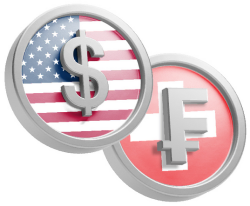
Flexity Analysis for USDCHF
Forecast Overall(Short-Term, Long-Term): ST=Probably Down LT=Probably Down
Forecast Methods(Short-Term, Long-Term):
[Method0] ST=Down LT=Down
[Method1] ST=Up LT=Same
[Method2] ST=Down LT=Down
FlexityIndicator Analysis Method(0)
Short-Term: The analysis indicates that the USD/CHF price is expected to go down in the short term. **Answer:** The price for USD/CHF is expected to go down. Long-Term: The USD/CHF exchange rate is forecasted to decline in the long term. The analysis indicates a consistent downtrend since September 2003, supported by a specific prediction of a -0.40% drop to 0.787712 after one year. Additionally, an investment of $100 would decrease to approximately $99.60 by September 2026. These factors, combined with the use of advanced predictive algorithms, confirm that the price is expected to go down. **Answer:** The USD/CHF rate is expected to go **down** in the long term.
Result: [Method0] ST=Down LT=Down
FlexityIndicator Analysis Method(1)
Short-Term: The short-term outlook for USD/CHF suggests a bullish trend with a current value of 1.02435. While there are potential pullbacks towards 1.02 anticipated, the overall direction indicates an upward movement. Factors such as geopolitical tensions and risk-off sentiment may lead to volatility, but these same factors could also drive demand for safe-haven currencies like USD and CHF, potentially strengthening both. Central bank policies and trade tensions add to the volatility, but the primary trend leans upwards with possible corrections rather than a consistent decline or stability. **Answer:** The price for USD/CHF is expected to go up in the short term, with potential pullbacks but an overall bullish outlook. Long-Term: Based on the analysis of various factors influencing USDCHF: 1. **Swiss National Bank Interventions**: The SNB may intervene to prevent CHF appreciation, potentially strengthening USD and increasing USDCHF. 2. **Central Bank Policies**: Shifts in policies elsewhere, such as Australia's rate cuts, might make USD more attractive, possibly raising USDCHF. 3. **Trade Tensions**: U.S. tariffs could increase demand for USD as a safe haven, potentially boosting USDCHF. 4. **Risk Sentiment and Market Uncertainty**: During times of stress, CHF demand might rise, which could lower USDCHF. **Conclusion**: The influences on USDCHF are mixed, with both upward and downward pressures present. Given the long-term horizon (2025), it's challenging to predict a definitive trend without more specific data. Investors should expect volatility or sideways movement and consider diversification strategies.
Result: [Method1] ST=Up LT=Same
FlexityIndicator Analysis Method(2)
Short-Term: The USDCHF price is expected to **go down** in the short term. **Reasoning:** - The pair has already shown a decrease of -0.53% and faces potential further declines if resistance levels are broken. - Dovish Federal Reserve bets and upcoming rate cuts could weaken the US dollar, impacting USDCHF negatively. - External factors like retail sales data and jobless claims may add pressure on the dollar. - Support levels at 0.79 might be broken, leading to bearish momentum. Overall, these factors suggest a downward trend for USDCHF in the short term. Long-Term: **Answer:** Based on the analysis provided, the USDCHF pair is expected to continue its downtrend in the short term. This bearish momentum is driven by the Swiss Franc's strength and key support levels being at risk of breach. While potential reversals could occur depending on upcoming economic data and Fed policy outcomes, the immediate expectation remains for a downward trend. **Short-term Outlook:** The price is expected to go down. **Long-term Outlook:** The analysis does not provide a definitive long-term forecast but suggests that future movements will depend heavily on economic indicators and central bank policies. Without additional information, it is uncertain whether USDCHF will rise or stabilize in the long term.
Result: [Method2] ST=Down LT=Down
